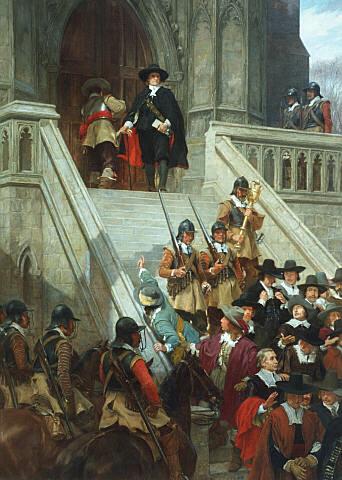 |
James Patterson I or (Pattison) was a Scotsman by birth and was a soldier opposed to Cromwell and the Commonwealth. He was on the side of King Charles II. He was made a prisoner by the Cromwell Army at the Battle of Dunbar on December 3, 1650 and was transported to the colonies by order of the Protector. This way, Cromwell made more money to fight his war. On November 26, 1651, he embarked from London on the ship called the "John & Sarah" and landed in Charleston before May of 1652.
The first that is known of his whereabouts on this side of the Atlantic was in 1658 where he was a resident of Billerica, Middlesex County, Massachusetts where he became a large landowner. His military prowess helped him earn his freedom and become well-off.
He married Rebecca Stevenson of Cambridge, Massachusetts on 29 March 1662. She was the daughter of Andrew and Jane Stevenson.
In King Phillip's War, his home was a garrison, and for his services in that war he was awarded (or his heirs were awarded) a grant of land in Narragansett near Templeton. He had eight children and he died 14 May 1701.
James Patterson II was seventh in order of birth and was born in Billerica, Massachusetts on 13 April 1683. He moved to Dunstable where he resided several years and then moved to Groton, Massachusetts where he died in 1738. He had six children and it is believed he was married to Mary Elizabeth Bibbe of Medford, Massachusetts.
James Patterson III was second in birth order. He married a widow named Elizabeth Bartlett (maiden name Nichols) on 7 January 1744 in Billerica, Massachusetts. She died 4 May 1759. They had six children, the third of which is Joseph Patterson who was born on 25 December 1751.
Joseph Patterson served in the Revolutionary War, and was engaged in thirty-two different battles. Out of 700 of the regiment, he was one of the thirty-five who came under command of General Dekalb who fell at the Battle of Camden. He had marched from Delaware to engage in the siege of Boston. He was also at the Battle of Brandywine and other hard-fought battles of the Revolution. After the war was over, he returned to Elktown, Delaware (now Maryland) where he married Mary Jones on 23 June 1782. He was intimately acquainted with General George Washington. He died on 4 July 1798, just 22 years after the Declaration of Independence was signed. He left a widow and five children.